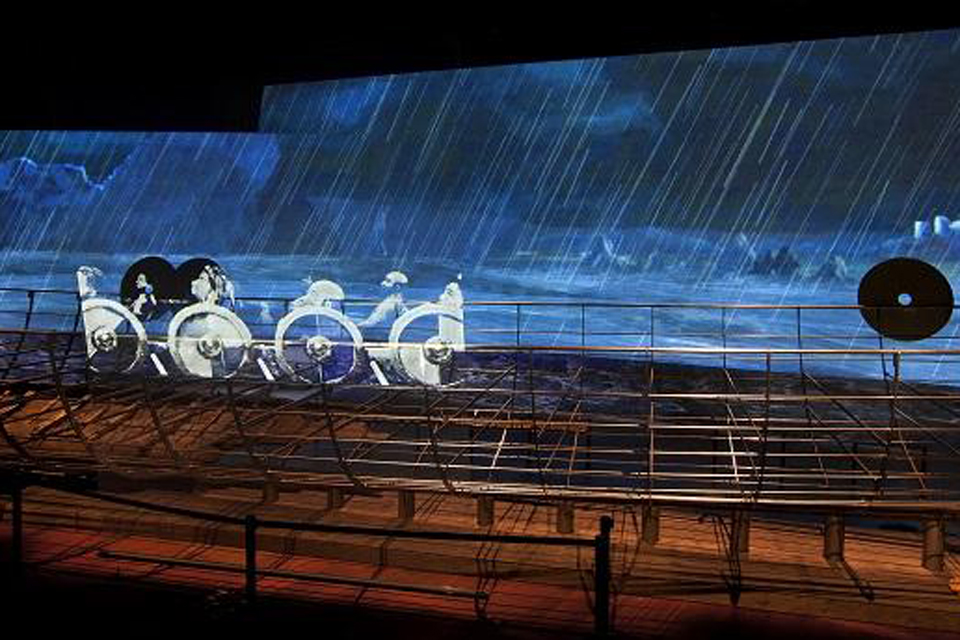Largest Viking ship ever found is being conserved
 The focal point of the Viking exhibition 2013 will be the world’s largest known Viking ship, the so-called wreck 6. Originally a 37 meters long warship its wreck was unearthed in Roskilde harbor in 1997. The exhibition is built up around the 20% of the ship that is still preserved, placed on a full-scale replica in stainless steel.
The focal point of the Viking exhibition 2013 will be the world’s largest known Viking ship, the so-called wreck 6. Originally a 37 meters long warship its wreck was unearthed in Roskilde harbor in 1997. The exhibition is built up around the 20% of the ship that is still preserved, placed on a full-scale replica in stainless steel.
Currently the timbers of the ship are drying out in gigantic steel tanks at the Danish National Museum’s conservation centre at Brede outside Copenhagen. It is estimated that the construction would have taken up to 30,000 hours of skilled work, plus the labour of felling trees and hauling materials, not counting the time absorbed by weaving the huge sails. At just over 36 metres, it was four metres longer than Henry VIII’s flagship Mary Rose built 500 years later, and six metres longer than the Viking ship spectacularly recreated as the Sea Stallion, which sailed from Scandinavia around Scotland to Dublin in 2007.
The ship, which has been dendrochronologically dated to 1025 A.D. must have been a troop carrier. It approximately held 100 warriors taking turns on 39 pairs of oars, tightly packed with a minimal amount of week beer, dried salted mutton and cod. It would have been an uncomfortable journey, but short: they did not need to carry much as their ship could move startlingly fast – Sea Stallion managed an average speed of 5.5 knots, and a top speed of 20 knots. Once they landed, the warriors could forage with ruthless violence in the undefended coastal communities. Records in the annals talk about fleets of several hundred ships, the equivalent of armies up to 10.000 men.
The dates suggest Roskilde 6 may have been built for the Danish King Canute, who with his father Sweyn Forkbeard conquered England in the beginning of the new millennium. According to amongst other texts the chronicles of John of Wallingford, Sweyn and his son were involved in raids against England during 1002–1005, 1006–1007, and again in 1009–1012. Some claim it was to revenge the St. Brice’s Day massacre of England’s Danish inhabitants in November 1002 in Oxford where the sister of King Sweyn was presumably killed. However Sweyn was involved in raiding already in the end of the tenth century. Another temptation was probably the enormous amounts of silver the Viking invaders succeeded in being paid as tribute. At the end – in 1018 – the English had to cough up with the staggering sum of 82.500 pounds of silver. Afterwards his son Canute and grandsons Harold Harefoot and Harthacnut ruled England for 26 years.
Accident
The Viking ship was found by accident when an extension was being built to the Roskilde ship museum in Denmark; all together 9 ships that had been deliberately sunk to narrow the firth and protect the approach to the town of Roskilde, which might have been a royal seat at that time. Until 2010 the timbers stayed in storage while the National Museum worked out what to do with the unexpected addition to its collection plus raising the money for the full conservation.
Conservation is however not all. The archaeologists in Roskilde are experts on recreating the ancient ships and currently 39 replicas of Viking boats and other traditional Scandinavian vessels are sailing in the harbour each summer. For the brave trips can be booked in season, weather permitting. One day the Museum hope to recreate a full-size, ocean-going replica of Roskilde 6, and send it across the sea in order to once again “terrorise” the coasts of the British Isles.
READ MORE:
Read more about the Viking Exhibition 2013
